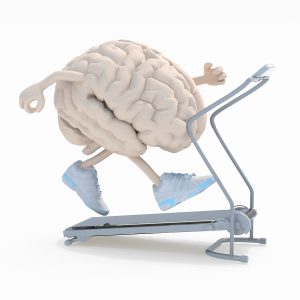 If you think it’s too late to do something about your memory, you are wrong. You can improve your brain health and build new neurons as you age. What’s the secret? Exercise and good diet, of course. To me, that’s a small price to pay to keep your brain sharp and fast.
If you think it’s too late to do something about your memory, you are wrong. You can improve your brain health and build new neurons as you age. What’s the secret? Exercise and good diet, of course. To me, that’s a small price to pay to keep your brain sharp and fast.
Every day new studies reveal the benefits of exercise and diet―particularly for seniors—to prevent or delay the onset of diseases. Up to 50 percent of so-called “diseases of aging” can be made less severe by staying active and engaging in daily exercise routines.
But many seniors are apprehensive, even skeptical: they figure it’s too late to do anything about their brains. Last October, researchers at McMaster University in Ontario, Canada, published test results on aerobic fitness and memory performance in healthy, older people.
Included in their study were sedentary men and women aged 60 or older. After testing their memory recall skills, the researchers randomly assigned the volunteers to visit the lab and stretch, as a control group, or to start exercising. Then, the researchers split the exercise group into two groups:
- One group engaged in moderate, steady walking for 50 minutes, 3 times a week
- Another did inclined walking in intervals: (High Intensity Interval Training, or HIIT), 4 cycles of achieving 90% maximum heart rate for 4 minutes and 3 minutes of easy walking
After 12 weeks of exercise, the researchers administered the same fitness and cognitive tests. The interval walkers showed significant improvements in both physical endurance and memory performance. Aerobic exercise done in high intensity intervals was shown to improve brain health.
HIIT for Senior Brain Health
When developing a HIIT program, consider the duration, intensity, and frequency of the work intervals and the length of the recovery intervals. For example:
- The intensity during the high intensity work interval should range ≥ 80% of your estimated maximal heart rate. This will feel difficult, but as general rule of thumb, you should still be able to talk. Identify your target heart range, and periodically check your pulse to ensure you are not over extending.
- The intensity of the recovery interval should be 40-50% of your maximum heart range. This will keep you comfortably moving, and help you recover and prepare for your next work interval.
Regardless of age, gender and fitness level, safe HIIT training requires monitoring. Talk to your doctor or health care professional before you begin, and modify your intensity to your level of fitness. When it comes to brain health for seniors, it’s never too late to start.

Recent Comments